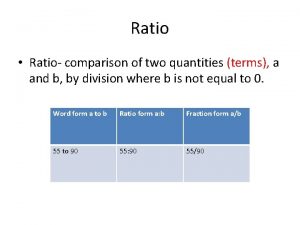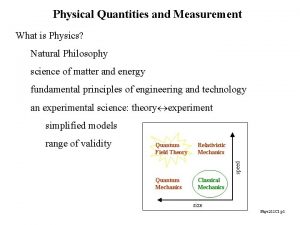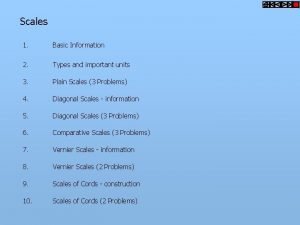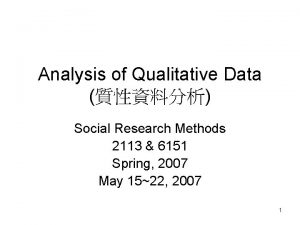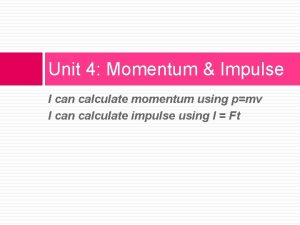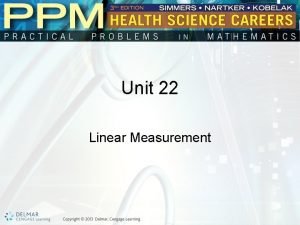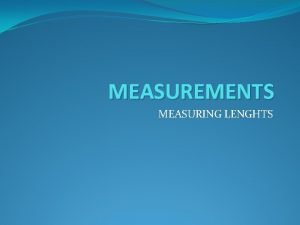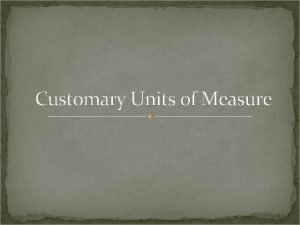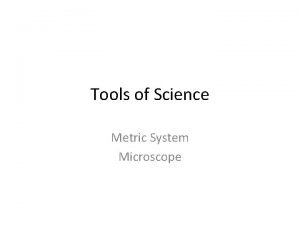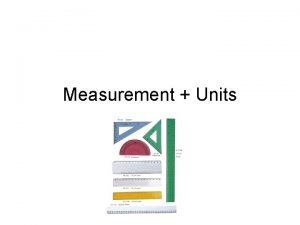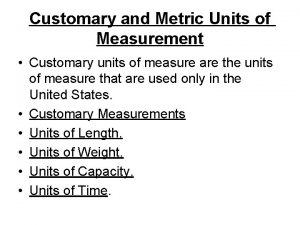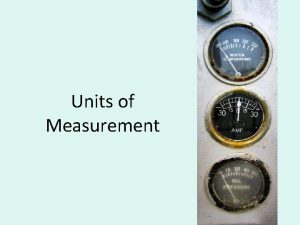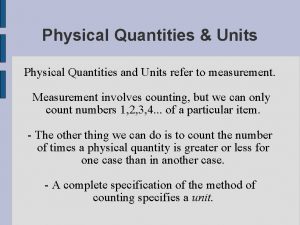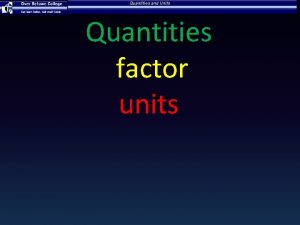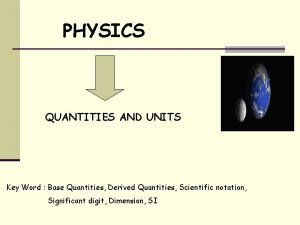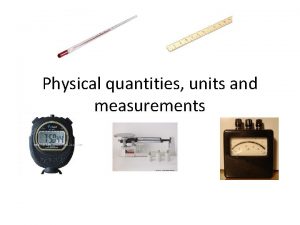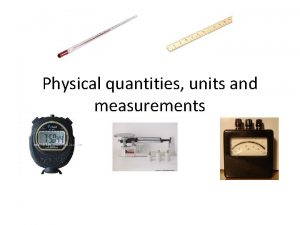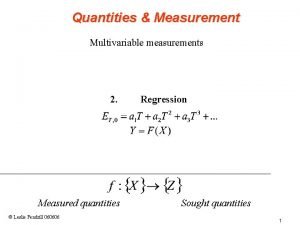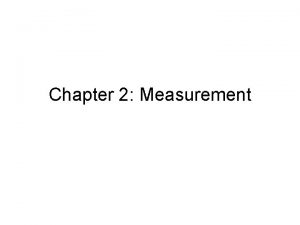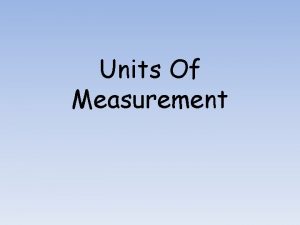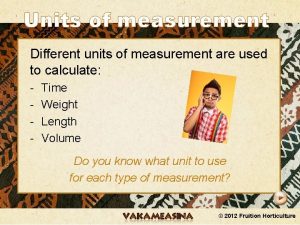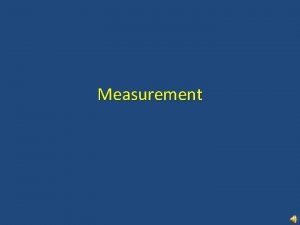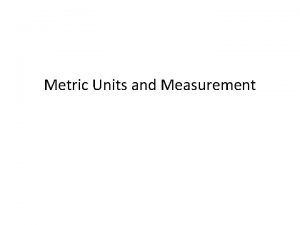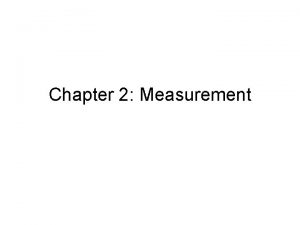Units Of Measurement Measurement Quantitative data represents quantities





















- Slides: 21

Units Of Measurement

Measurement • Quantitative data (represents quantities) • Quantity: something that has magnitude, size or amount Example: o a box has a quantity that is represented by volume o A track has a quantity that is represented by meters or miles

SI Measurement • International Standards of Measurement • There are 7 SI Base Units

SI Base Units QUANTITY SYMBOL length Mass Time Temperature Amount of Substance Electric Current Luminous intensity l m t T n BASE UNIT NAME & Symbol Meter (m) Kilogram (kg) Seconds (s) Kelvin (K) Mole (mol) I Ampere (A) Iv Candela (cd)

REMEMBER • • Meters = m Liters = L Grams = g Seconds = s

SI Base Units (Common) • Mass: the quantity that measures how much matter Base: gram • Weight: A measure of gravitational pull on matter • Length: the quantity that measures distance Base: meter,

SI Prefixes • Each Base Unit can carry with it a number of prefixes • Each prefix represents a quantity larger or smaller than the Base Unit • There are 8 prefixes you need to learn

SI Prefixes

SI Prefixes • You will be asked to convert from one unit to another • The largest numbers are at the top of the chart (mega), the smallest numbers are at the bottom of the chart (micro)

SI Prefixes • When you move UP the chart from a smaller number to a larger number MOVE THE DECIMAL TO THE LEFT • When you are moving DOWN the chart from a large number to a smaller number MOVE THE DECIMAL TO THE RIGHT

Lets try It !!! • 2300 kilometers to dekameters o Decide which way to move your decimal • (Move right) • Next count how many unit difference it is from kilo to deka • 2 2300 kilometers = 230000 dekameters

Practice these next few conversions! • • • 3. 25 micrograms --> dekagrams. 00562 kiloliters --> gigaliters 33. 25 centimeters --> hectometers 650 meters --> millimeters 68520 picoliters --> deciliters

Answers • • • Decimal to left 7 places: . 000000325 dekagrams Decimal to left 6 places: . 0000562 gigaliters Decimal to left 4 places: . 003325 hectometers Decimal to the right 3 places: 650000 millimeters Decimal to left 11 places: . 00000068520 deciliters

Derived Units • Combination of units o Ex: m 2, g/m. L, etc.

Volume • Volume is a derived unit: Length x width x height Units: (m) x (m) = m 3 (cubic meter) Or (cm) x (cm) = cm 3 (cubic centimeter)

Density • Density is a derived unit: Density = mass / volume = “stuff”/”space” • Units for density could be g/L, kg/m 3 or g/cm 3 • Be sure you know which units you are using in your equation and be consistent in your answer

Density Wheel • The wheel is a quick way to determine what you are solving for Using the wheel: 1. ) Cover the variable that you are solving

2. ) Determine the formula with the remaining variables. 3. ) Multiply across in the wheel, Divide up and down in the wheel • SHOW ALL OF YOUR WORK!

m : : d x v

Common Conversion Factors • Used to convert between related measurements • Some are common to you, some are new or often forgotten • These conversions will be used in dimensional analysis to convert between units • Ex: 1” = 2. 54 cm

 Derived quantities
Derived quantities Difference between linear and angular acceleration
Difference between linear and angular acceleration Which of these quantities represents the largest mass?
Which of these quantities represents the largest mass? Nouns and quantity expressions
Nouns and quantity expressions Units physical quantities and vectors
Units physical quantities and vectors A ratio means the comparison of two quantities
A ratio means the comparison of two quantities What is physics
What is physics The plane scale represents units
The plane scale represents units Data analysis qualitative and quantitative
Data analysis qualitative and quantitative Data
Data K
K Income statement for absorption costing
Income statement for absorption costing Examples of qualitative data
Examples of qualitative data Mr. gallon
Mr. gallon Units of momentum
Units of momentum 3 units of linear measurements in metric system
3 units of linear measurements in metric system What is customary unit
What is customary unit Appropriate metric unit of typical room height
Appropriate metric unit of typical room height Customary units of measurement
Customary units of measurement Mili centi deci deca hecto kilo
Mili centi deci deca hecto kilo Opisometer is used to measure
Opisometer is used to measure Customary units of measurement
Customary units of measurement





